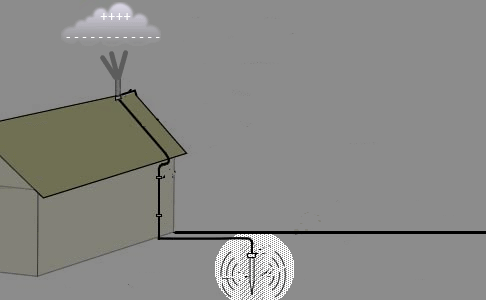The lightning rod, which Benjamin Franklin invented in 1749, is a metal pole mounted atop a building that draws lightning's electrical charge away from the structure.The rod is attached to an aluminium or copper cable that's connected to an underground conductive grid. This allows the electricity to dissipate harmlessly.
Because lightning tends to strike the tallest object in the vicinity, lightning rods must be taller than any buildings or other objects in the area.If installed properly, a lightning rod will carry a lightning bolt's electrical charge through the path of least resistance along the cable into the ground, reducing the risk of fire or heat damage from the strike.
Lightning looks for the easiest path to travel and lightning rods are good conductors of electrical current. If lightning strikes the rod, the electrical current is moved away from the house and is safely gotten rid of underground. Sometimes lightning strikes and then jumps around a bit, looking for a better path. If a lightning rod is nearby, the lightning can move over to it. This avoids more damage after the lightning has already struck.

No comments:
Post a Comment